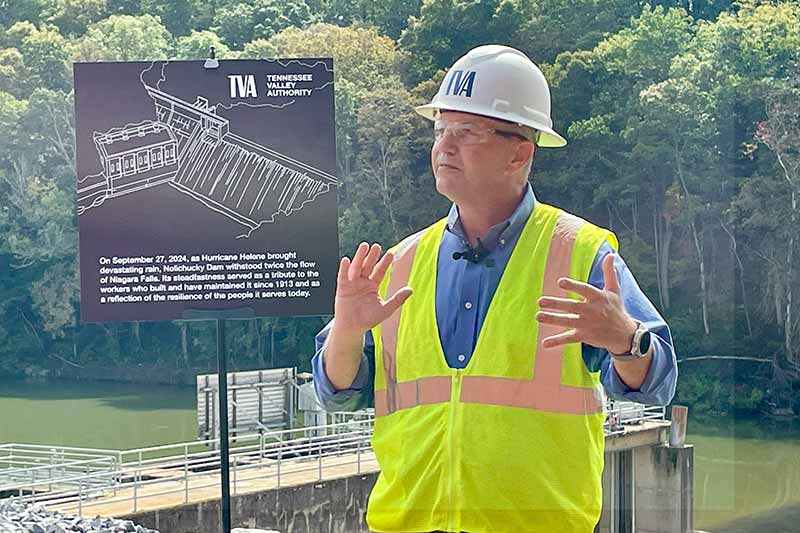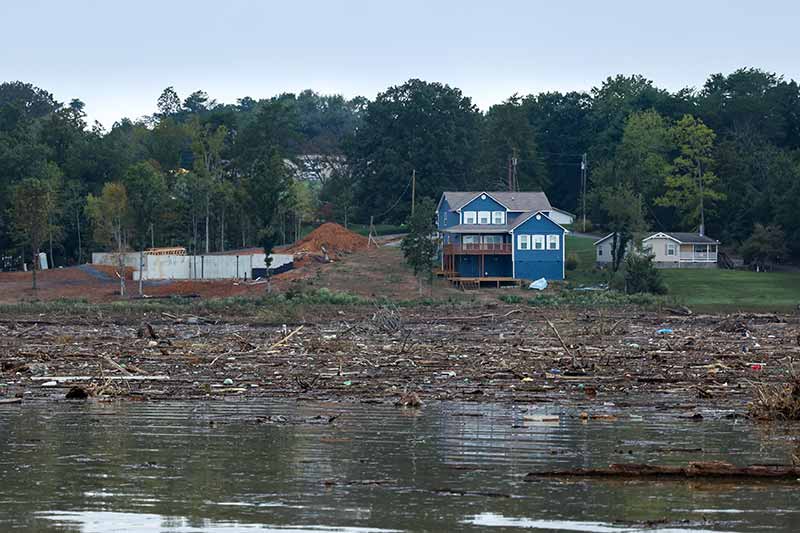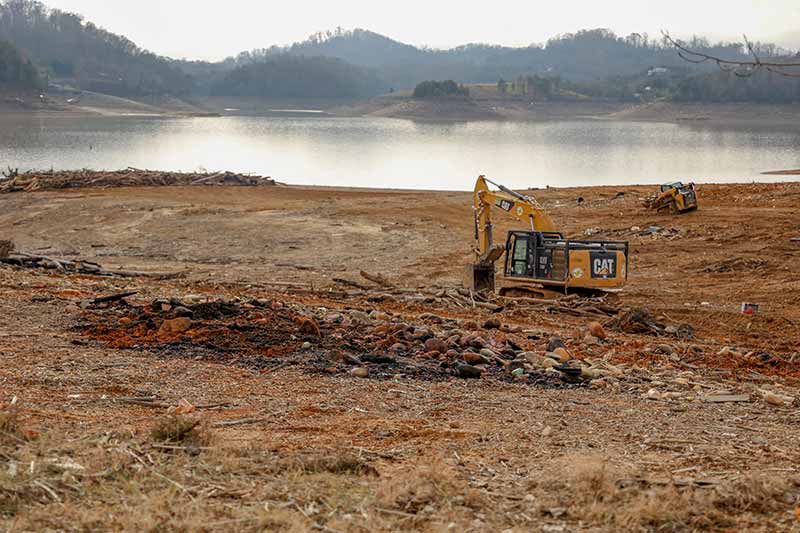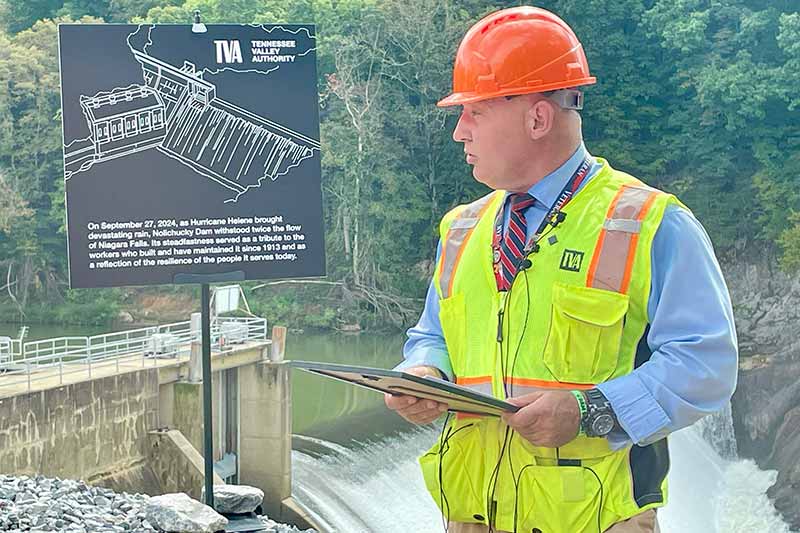One-Year Anniversary of Helene
A year seems a long time, in the scale of normal human events. But only a moment, in reckoning with a thousand-year flood.
On Sept. 27, 2024, Hurricane Helene brought historic rain to North Carolina and Tennessee. Along the way it wrecked the categories people have for describing and remembering such a disaster; some still mourn losses of property and life, as others celebrate survival and recovery. All are true at once.
And specialists at TVA, which was established in part to control waterways, can look back on the storm with both pride and an eye for lessons.
“We started to realize earlier in the week it had the potential to be a very large flood event,” said James Everett, who oversees river management. In many places the gauges measuring water flow already approached record levels. Then as the storm continued, he said, “we started losing gauges.”
Jennifer Dodd learned about Helene’s arrival from afar. She manages the safety of TVA’s 107 dams and got word of the storm during an industry conference in Denver, alongside colleagues from other affected utilities. All watched the storm curve into Appalachia.
“We were monitoring for issues TVA-wide, especially focused on a couple of big dams farther north,” Dodd said. “But then — no, wait — turns out little Nolichucky is in trouble.” The dam sits between Knoxville and Johnson City and is tiny. But it was withstanding a tremendous volume of water — twice the flow of Niagara Falls.
TVA regularly assesses risk at its dams, but the conditions at Nolichucky were so far outside the bounds of predictability that the Dam Safety team made a decision no one had made before, in almost a century of water management at TVA: They notified emergency management agencies that the dam might fail, which led to expanded evacuations.
Incredibly, Nolichucky held. The storm passed. And in its passing, a new challenge emerged: Helene had left behind a historic volume of debris.
Jack Muncy worked to coordinate TVA’s response with other groups, from state and federal agencies to local families. As the storm subsided, he said, “I realized there was more water than road.” So he abandoned his pickup truck and traveled by boat.
Muncy has, for years, helped fight wildfires out West, but the scale of Helene’s damage horrified him. At least 250 people died in the storm, and it scattered wreckage from horizon to horizon. “Breathtaking,” he said. “Difficult to put it into words. So much of it was rural. So the public saw it on television but they didn’t get to, you know, touch it.”
Each of these people faced Helene and came away with ideas about what to improve. More robust gauges, according to Dodd and Everett, would avoid what Everett calls “hydro-blindness.” Muncy wants to institute some of the streamlined decision-making he’s seen on wildfire teams.
It’s also true that they and their colleagues did heroic work. TVA’s river management saved almost a half-billion dollars in property and untold lives. Muncy worked alongside state and federal emergency management agencies, who pulled 5 million cubic yards of debris from regional waterways. TVA, in particular, was given an award by the Clean Water Professionals of Kentucky and Tennessee, for its work at Douglas Lake. And the system of dams, some more than a century old, held fast.
A recent proclamation by Kevin Morrison, mayor of Greene County, site of Nolichucky Dam, observed the year that has passed since the arrival of Helene. It captured something of the simultaneous sorrow and pride that remains in its aftermath. “As the Nolichucky River swelled to unprecedented levels and the dam faced immense strain,” he said, “TVA engineers and emergency personnel provided real-time data, expert counsel, and calm leadership that helped local authorities make life-saving decisions. Their vigilance and technical expertise were instrumental in mitigating further disaster and protecting countless lives downstream.”
And at the same time, Morrison said, the storm left “hundreds of families displaced, schools and businesses shuttered, historical landmarks damaged beyond repair, and emotional scars etched deeply into the hearts of residents.”
He finished by declaring Sept. 27 a Hurricane Helene Day of Resilience: “Let this proclamation serve as a lasting tribute to our strength, our unity, and our shared journey from devastation to renewal.”
Photo Gallery

Tom Barnett, TVA’s?vice president of River Management and Dam Safety, speaks at an event marking the first anniversary of Hurricane Helene and the devastating rain it brought to the region.

Debris from the historic flooding washed downstream.

After Helene, crews cleared debris from Douglas Reservoir.

Greene County Mayor Kevin Morrison reads a proclamation marking the anniversary of Helene.
PHOTO AT TOP OF PAGE: A marker at Nolichucky Dam notes the historic event.
